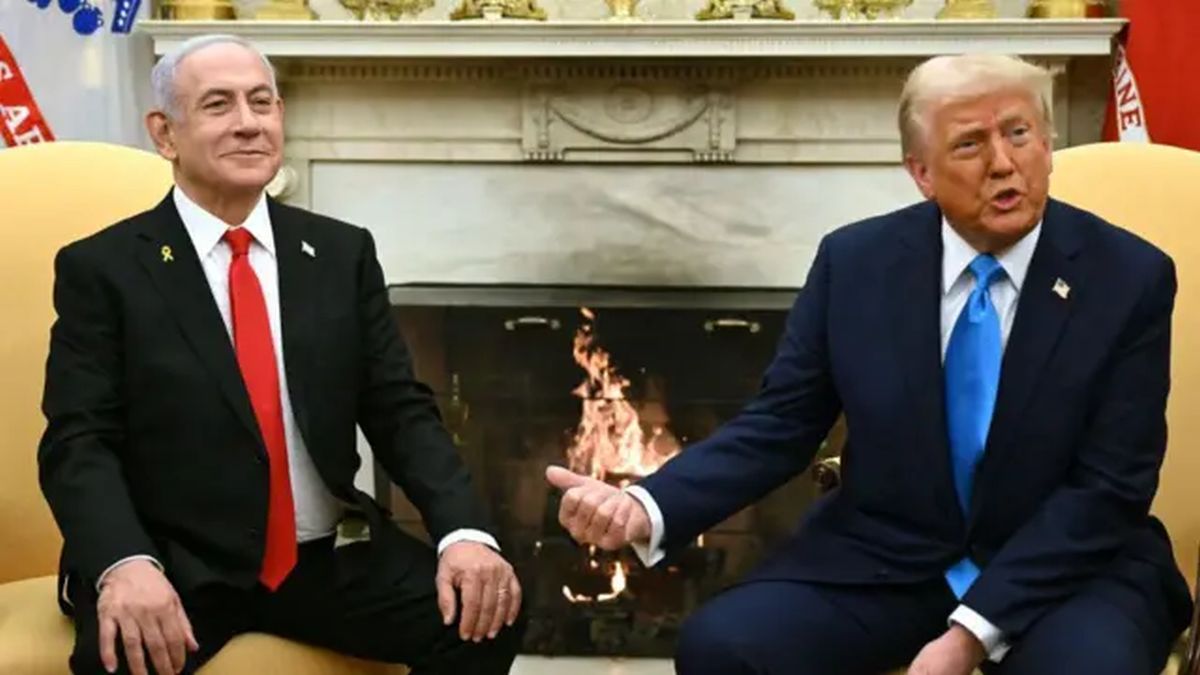The cry for help from Ukraine is understood by the delicate economic situation: its bonds yield more than 20% (45% which matures this year) and it has a bailout in progress by the IMF, but it will be difficult for it to continue with payments to external creditors, since the situation has drastically worsened.
It forced its government to apply very severe measures that we Argentines already know by heart: the Central Bank limited the extraction of local currency to 100,000 hryvnias per day (about $3,000), prohibited the purchase of foreign currency, and its currency is experiencing the biggest devaluation since 2015.
On the other hand, the ruble and Russian actions have become the necessary evil to impose the will of Russia outside its borders, with heavy losses, which came to deal a heavy blow to the Russian inhabitants, but with shrapnel everywhere. investment portfolios this week, especially variable income.
History shows that core country stock markets have almost always bounced back from geopolitical attacks and risks that have stood in the way: Deutsche Bank conducted a study concluding that geopolitical stock sell-offs typically hover around 6 %-8% drop on average, and it takes three weeks for the stock to bottom out and another three to recover. But in the short term it may be too long for many investors with little back to withstand sudden losses.
The markets are not afraid of Russia and its renewed imperialist ambitions, they are afraid of the economic slowdown and how an escalation of irrigation in the Ukraine can feed back new rises in the price of commodities, especially hydrocarbons, and that it is transferred to the prices: economic slowdown + inflation = stagflation.
The US will continue to deal with a rise in inflation and a tightening of monetary policies, to which are added the sanctions imposed by the US on Russian companies and inhabitants. But the backdrop hides the fear of inflation which from transitory became more permanent and, above all, more structural, judging by the small difference between the gross and core index (7.5% vs. 6.0% year-on-year in January in the case of the US) . That forces a tougher monetary policy, and the markets don’t like the idea.
Oil having touched 100 dollars a barrel, soybeans at a maximum of 9 years, and gold and other precious metals resuming their upward path (to their maximum for gold) feed back a rise in rates according to futures in Chicago .
In addition, Europe is afraid of energy supply: 40% of the natural gas it buys is from Russia. Germany is even far more dependent. Russia does not trade much with the US: it mostly sells its products to China and the European Union. And it’s not bad: Russia’s gold and foreign exchange reserves exceed 600 billion dollars, a true world power.
Despite that figure, I estimate a devaluation of the ruble beyond the current USDRUB 80 and an acceleration of inflation, within controlled parameters given the enormous firepower of its central bank.
When Russia invaded Crimea in 2014, it received harsh sanctions that provoked what may become more pronounced with these new restrictions: a greater “de-dollarization” of international reserves, commodity futures markets, commercial transactions, and quantitative restrictions on the holding of currencies is coming. his “enemies”. Russia would begin to implement a phased strategy to move away from the US dollar in a process that had already begun: in the first quarter of 2020, the proportion of trade operations between Russia and China that use the US dollar had already fallen to 46%, when five years ago it was 90%. Other countries have been joining the initiative, including China, Turkey, Iran, India and Brazil.
International bank reserve structures are based on more than 60% in dollars and the dollar continues to occupy the first position in international trade. Russia is no exception. But in 2019 Russia and China signed a treaty to use national currencies in mutual trade, just as Argentina has a trade swap with China in yuan. In the same direction, Russia accelerated the decline of its US Treasuries reserves, now counting half compared to what they had in 2018, and less than a third since 2013.
As in the TEG: “Russia attacks Ukraine.” What will be the next steps? We can only expect volatility in the markets and a negative impact from the second round of sanctions announced by Biden. (which is added to that of the US allies, especially Great Britain, but with great reluctance on the part of Germany, the most vulnerable due to its energy dependence). It is time to remain conservative in terms of investments and adopt short-term hedging strategies. Havens can be gold and silver, which can be purchased through their ETFs “GLD” or “SLV”, or in mining shares (“GDX” and “SIL”). Oil companies are an alternative as well. Opportunities in the rest of the sectors will soon appear.
Partner and Director of Research for Traders. Twitter: @gneffa
Source: Ambito




